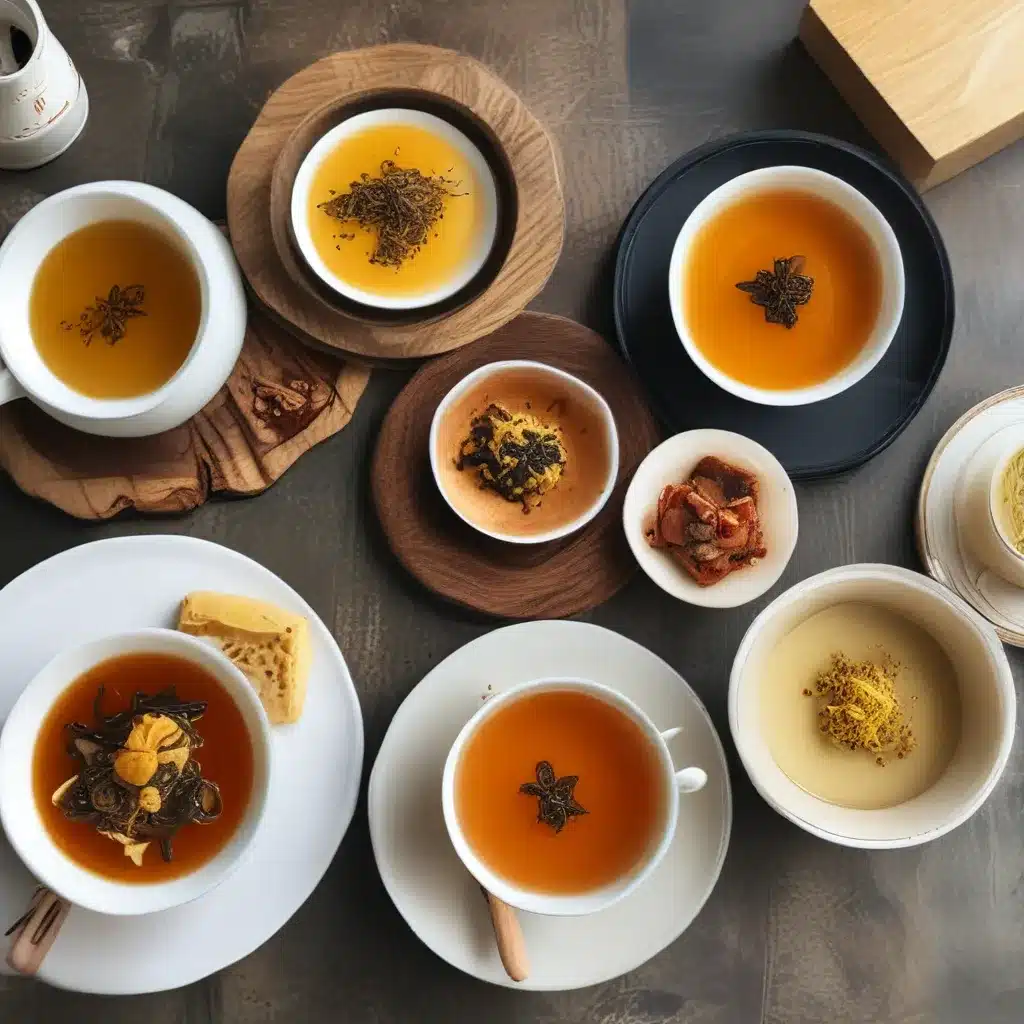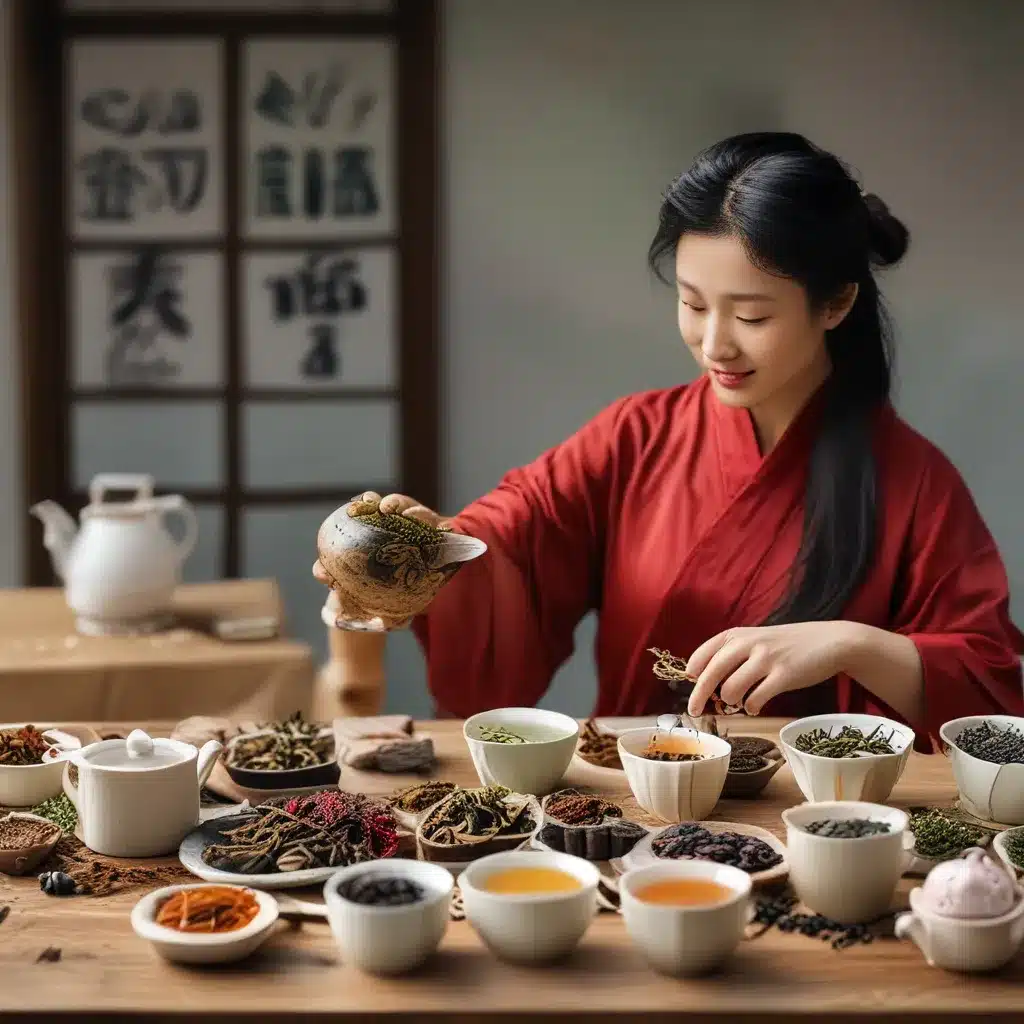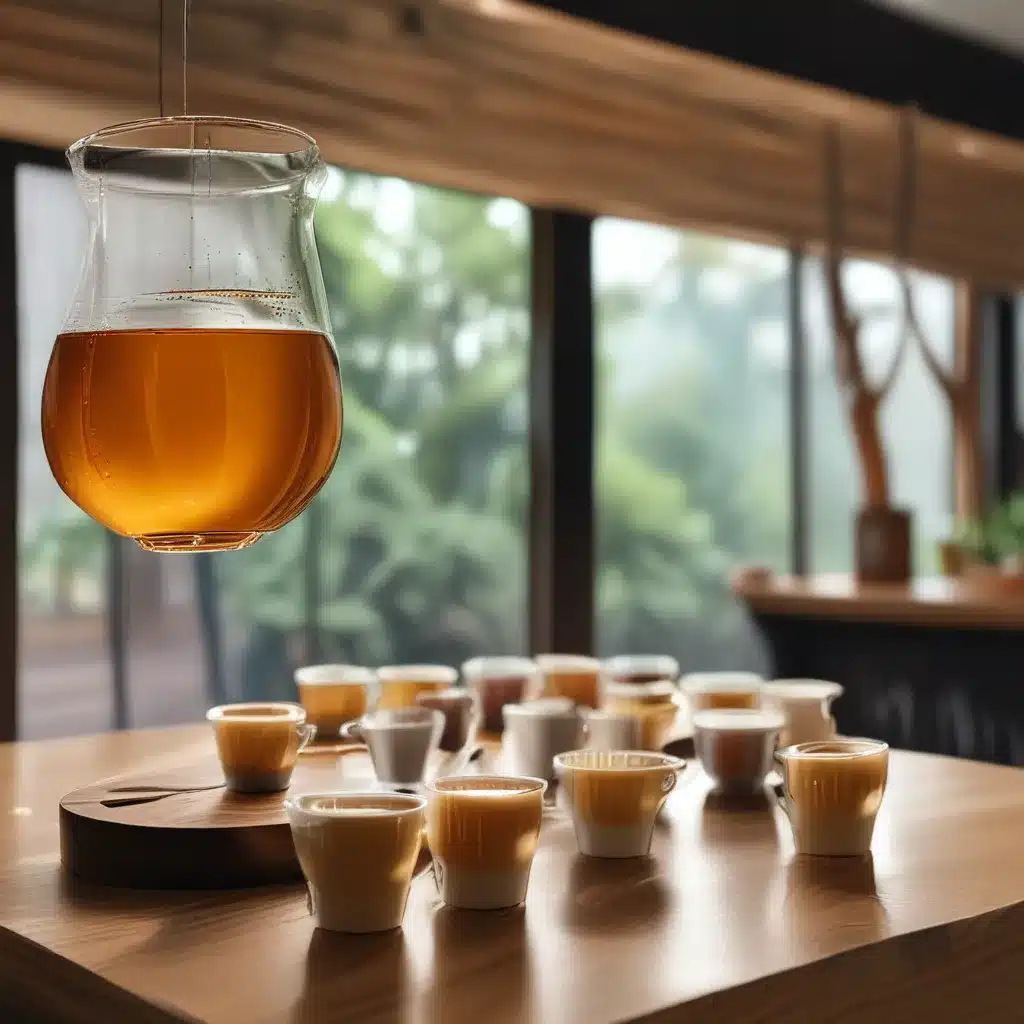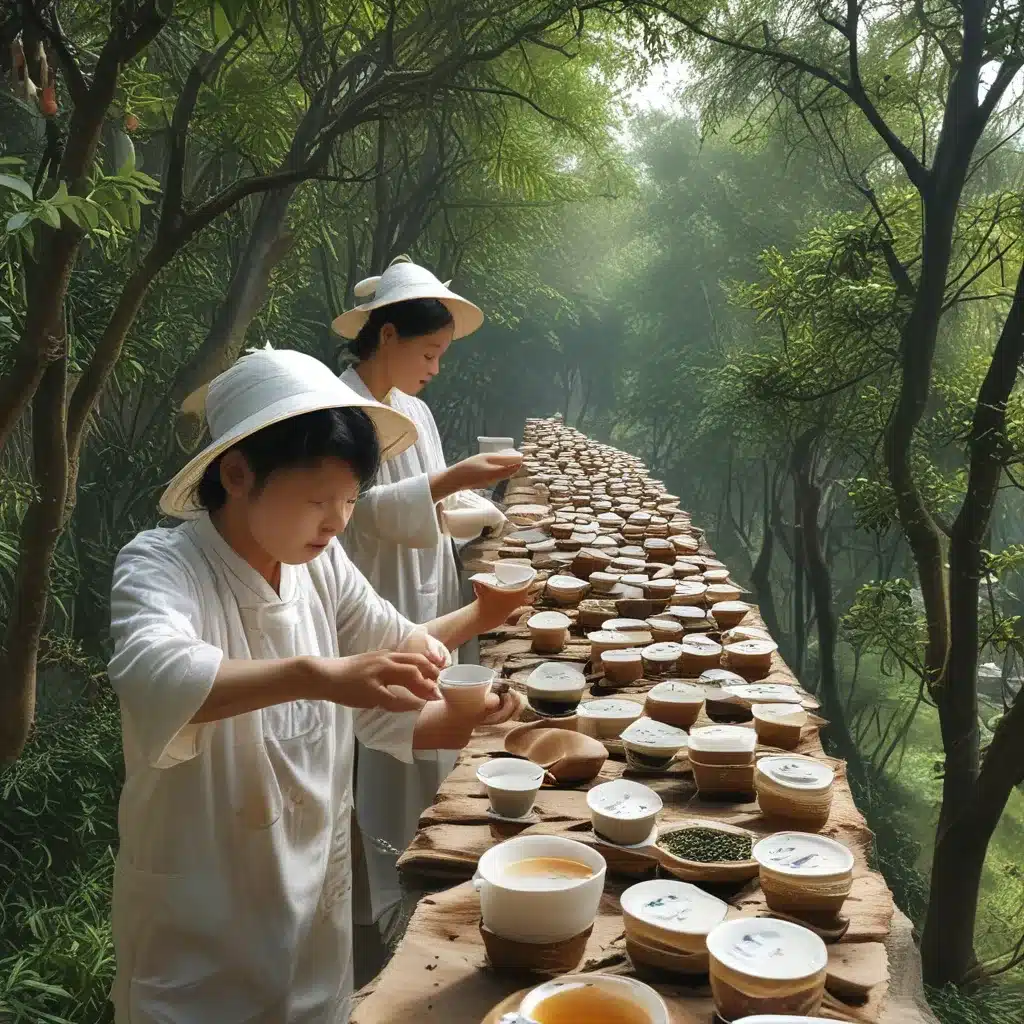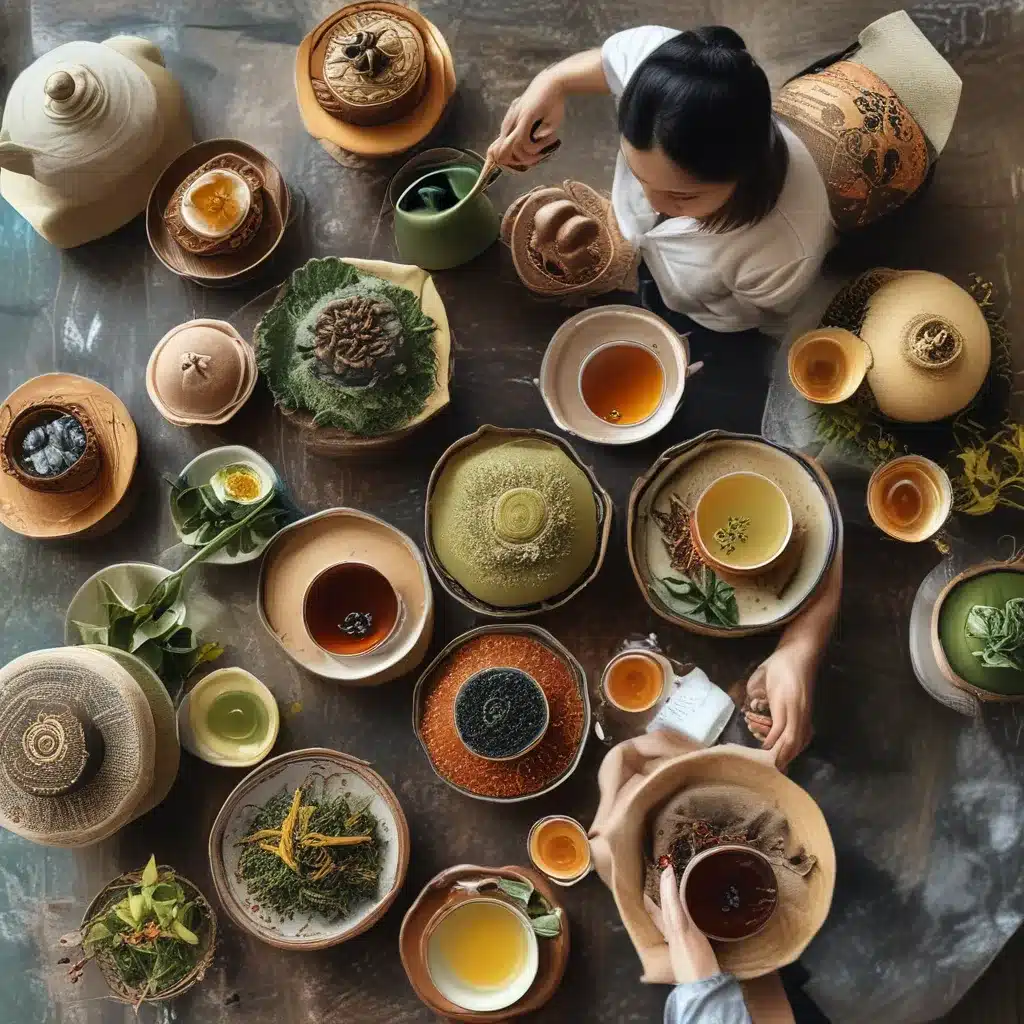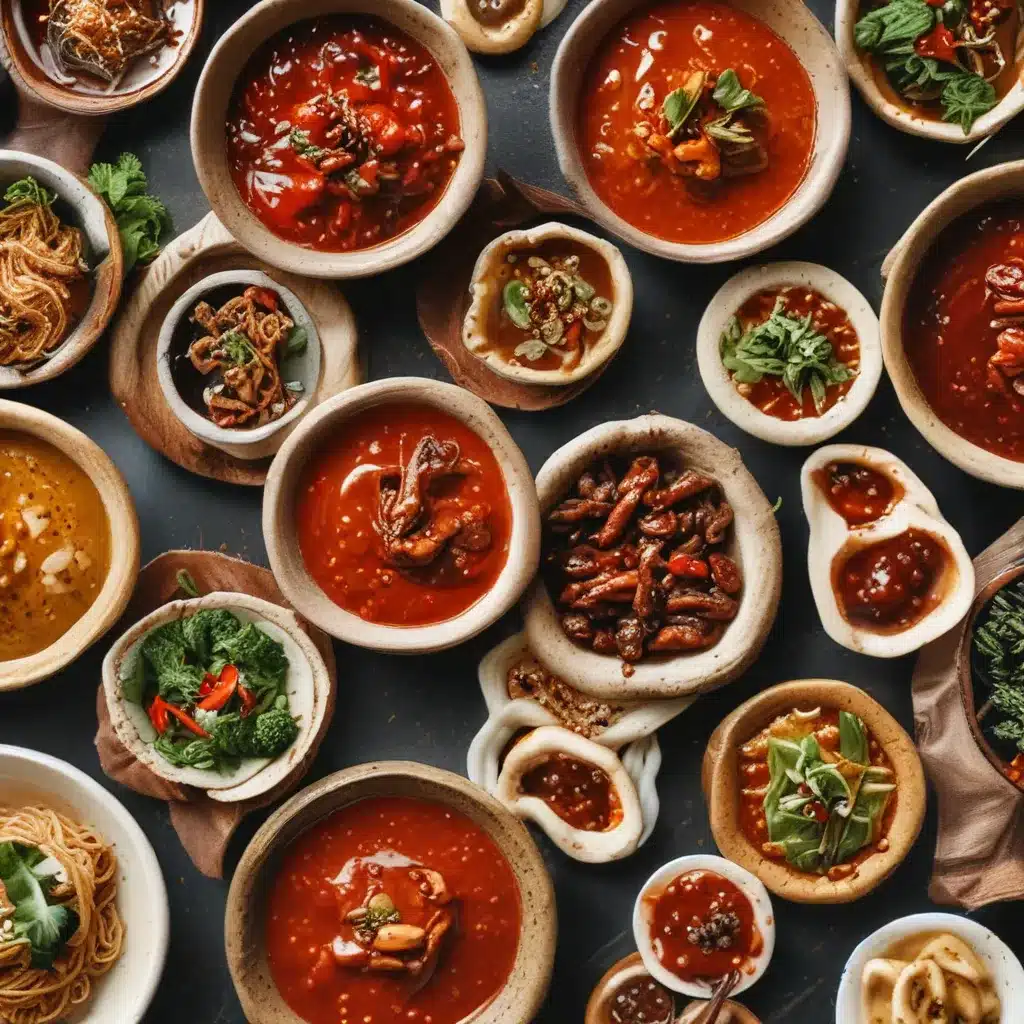
As a self-proclaimed sauce aficionado, I’ve always had a deep fascination with the complex, flavor-packed sauces that define Shanghai cuisine. From the silky-smooth, savory-sweet Shanghainese soy sauce to the umami-rich, fermented black bean paste, these culinary elixirs have a captivating story to tell – one that extends far beyond their ability to transform a simple dish into a gastronomic masterpiece.
Unveiling the Umami Enigma
In my culinary adventures, I’ve come to learn that the secret to Shanghai’s legendary sauces lies in their ability to harness the power of umami – that elusive fifth taste that has the uncanny ability to make our taste buds dance with delight. Umami, derived from the Japanese word for “deliciousness,” is the result of a unique chemical reaction that occurs when certain amino acids, like glutamate, interact with our taste receptors.
According to food scientist Hermann Berens, the key to unlocking the umami magic in Shanghai sauces lies in the fermentation process. “The prolonged fermentation of ingredients like soybeans, fish, and various spices and herbs allows for the breakdown of complex molecules into their simpler building blocks, including amino acids like glutamate,” he explains. “This creates a harmonious symphony of flavors that is simply unmatched.”
Nutritional Powerhouses: The Health Benefits of Shanghai Sauces
But the captivating flavors of these sauces are only part of the story. As I delved deeper into the subject, I discovered that Shanghai sauces are not only culinary delights, but also nutritional powerhouses that can offer a wealth of health benefits.
According to the Kraft Heinz 2022 ESG Report, many of the key ingredients used in Shanghai sauces, such as soybeans, fermented black beans, and various herbs and spices, are rich in essential vitamins, minerals, and antioxidants. For instance, soybeans, the foundation of Shanghainese soy sauce, are a fantastic source of protein, fiber, and various B vitamins, while also containing isoflavones, which have been linked to a reduced risk of certain types of cancer.
Moreover, the fermentation process that gives these sauces their unique flavor profile also enhances their nutritional value. “The fermentation process breaks down complex compounds into more easily digestible forms, making the nutrients more bioavailable to the body,” explains Berens. “This means that the vitamins, minerals, and other beneficial compounds in Shanghai sauces can be more readily absorbed and utilized by the human body.”
Unlocking the Culinary Potential of Shanghai Sauces
One of the things I love most about Shanghai sauces is their incredible versatility. These flavor powerhouses can be used to elevate a wide range of dishes, from the humble stir-fry to the most sophisticated of culinary creations.
As some Quora users have pointed out, the secret to achieving that authentic, restaurant-quality fried rice lies in the judicious use of soy sauce and other Shanghai-inspired condiments. By incorporating these umami-rich sauces into the cooking process, you can unlock a whole new depth of flavor that simply can’t be replicated with plain old soy sauce.
But the applications of Shanghai sauces extend far beyond the realm of Chinese cuisine. I’ve experimented with using them as marinades for meats, as dipping sauces for dumplings and spring rolls, and even as a flavor-boosting ingredient in Western-style dishes like burgers and salad dressings. The possibilities are truly endless!
Embracing the Art of Sauce-Making
As I’ve delved deeper into the world of Shanghai sauces, I’ve also developed a newfound appreciation for the art of sauce-making. These seemingly simple concoctions are the result of meticulous attention to detail, patience, and a deep understanding of the complex chemical reactions that take place during the fermentation process.
Take, for example, the making of Shanghainese soy sauce. This beloved condiment is the product of a months-long fermentation process, during which soybeans, wheat, and a carefully curated blend of spices and herbs are left to transform into a rich, umami-packed elixir. The patience and dedication required to create such a masterpiece is truly humbling.
Celebrating the Culinary Heritage of Shanghai
As I continue my journey of exploring the wonders of Shanghai sauces, I can’t help but feel a deep sense of admiration for the rich culinary heritage that has given birth to these flavor-packed creations. These sauces are not just condiments – they are a reflection of the ingenuity, resilience, and cultural identity of the people of Shanghai.
In a world where fast-paced lifestyles and mass-produced convenience foods have threatened to erode the traditions of home-cooked meals, the enduring popularity of these Shanghai sauces serves as a testament to the power of slow food and the importance of preserving culinary heritage.
By incorporating these sauces into our daily lives, we not only unlock a world of flavor but also pay homage to the generations of chefs, cooks, and food artisans who have dedicated their lives to perfecting these culinary masterpieces. And who knows, perhaps in doing so, we might just stumble upon the secret to unlocking our own umami magic.
So, the next time you find yourself reaching for a bottle of Shanghainese soy sauce or a jar of fermented black bean paste, take a moment to appreciate the rich history and nutritional benefits that these sauces have to offer. After all, One Dragon Restaurant is more than just a place to enjoy a delicious meal – it’s a gateway to a world of culinary wonder and cultural heritage.

